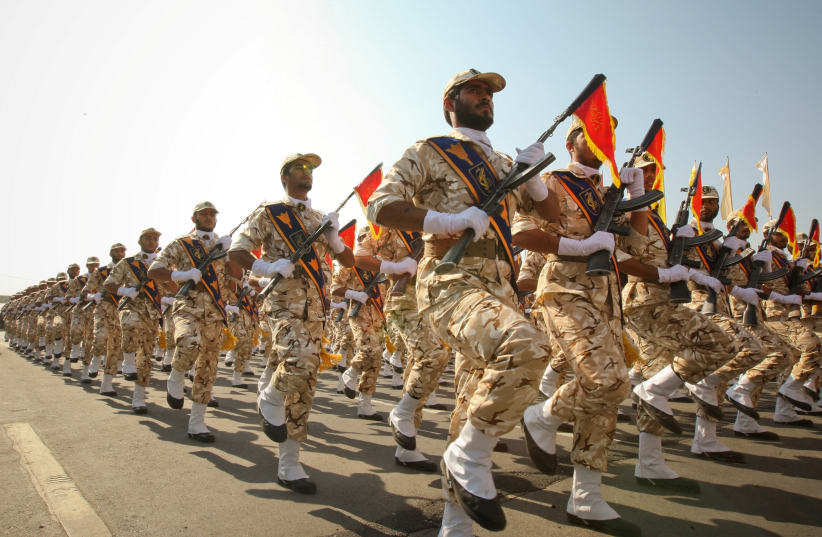Rhetoric by pro-Iranian groups in Iraq, as well as the threat from Iranian-backed militias operating there, have increased in the last several months, according to a US report.
The quarterly Lead Inspector General Report covers incidents from April to the end of June and examines the US-led anti-ISIS operations in Iraq and Syria.
In Syria, the report notes that Iran “continues to field Islamic Revolutionary Guard Corps soldiers, support Lebanese Hezbollah and command Shia foreign fighter networks.” This includes up to 3,000 IRGC and up to 100,000 of these Shi’ite fighters, some of whom come from as far away as Pakistan and Afghanistan and were recruited to help the Syrian regime.
US policy since last year has been for Iran to withdraw from Syria, but the US says that there has been no change on the ground. Instead they “improved their capability” to use drones and missiles in Syria. The report notes that there are “no specific increase in threats to US forces in Syria from Iranian-backed forces this quarter.”
The report also notes that Iraqi Shi’ite paramilitaries are operating in Syria to support the Syrian government. They participate in operations along the border and some even have strayed as far away as southern Syria near a US base called Tanf that is on the Jordanian border. But the US Operation Inherent Resolve, whose mandate is to fight ISIS, has no authority to fight Iranian forces unless they are attacked.
This creates a puzzle for Washington.
While the US says it wants Iran out of Syria, it won’t do anything about it. In Iraq the US is an ally of the Iraqi government and training Iraqis to fight ISIS. But the Hashd al-Shaabi or Popular Mobilization Forces of Shi’ite paramilitaries are now part of the Iraqi Security Forces. The US report notes that “US forces in Iraq do not partner with PMF elements.”
In fact, the report notes that the Iranian-backed units, linked to the PMF or to parties in the government, have sought legislation to remove US forces from Iraq. “Iranian-backed PMF units harassing troops and operations.” So CENTCOM has had to devote resources to monitor and deter Iranian activity, the report says. Classified portions of the report detail this further.
The US says that Iranian-affiliation PMF units “routinely made public statements threatening the US.” In addition, the report asserts that some of these units operate outside of government control, even though Baghdad has vowed to rein them in. In fact, they are supposed to be more standardized than before and giving up their militia and sectarian allegiances. But a recent protest in Nineveh plains between 30th Brigade, a PMF unit of mostly minority Shabak people, shows that the local units don’t want to give up their authority to Baghdad.
The report says that the threat from Iranian-backed forces “has increased in the past quarter.” It links this to Iran’s responses to US sanctions. That included rocket attacks near the US embassy and bases in mid-June.
The US report details how tensions with Iran since May have affected US diplomats and contractors. There are 4,750 contractor personnel station in Iraq. After threats from Iran causes the US with withdraw diplomats, the number of personnel in US missions in Iraq was reduced from 563 to 312.
